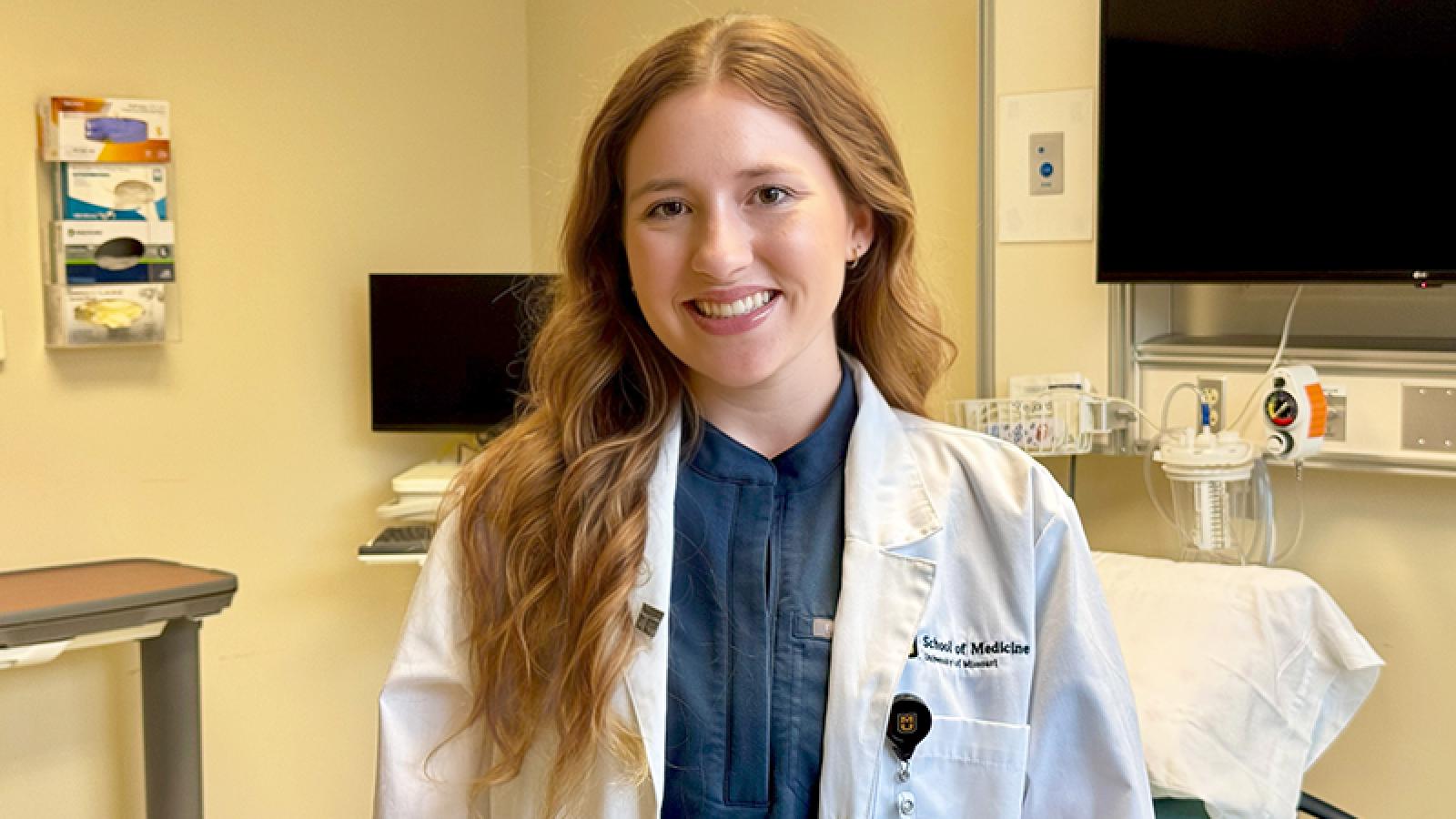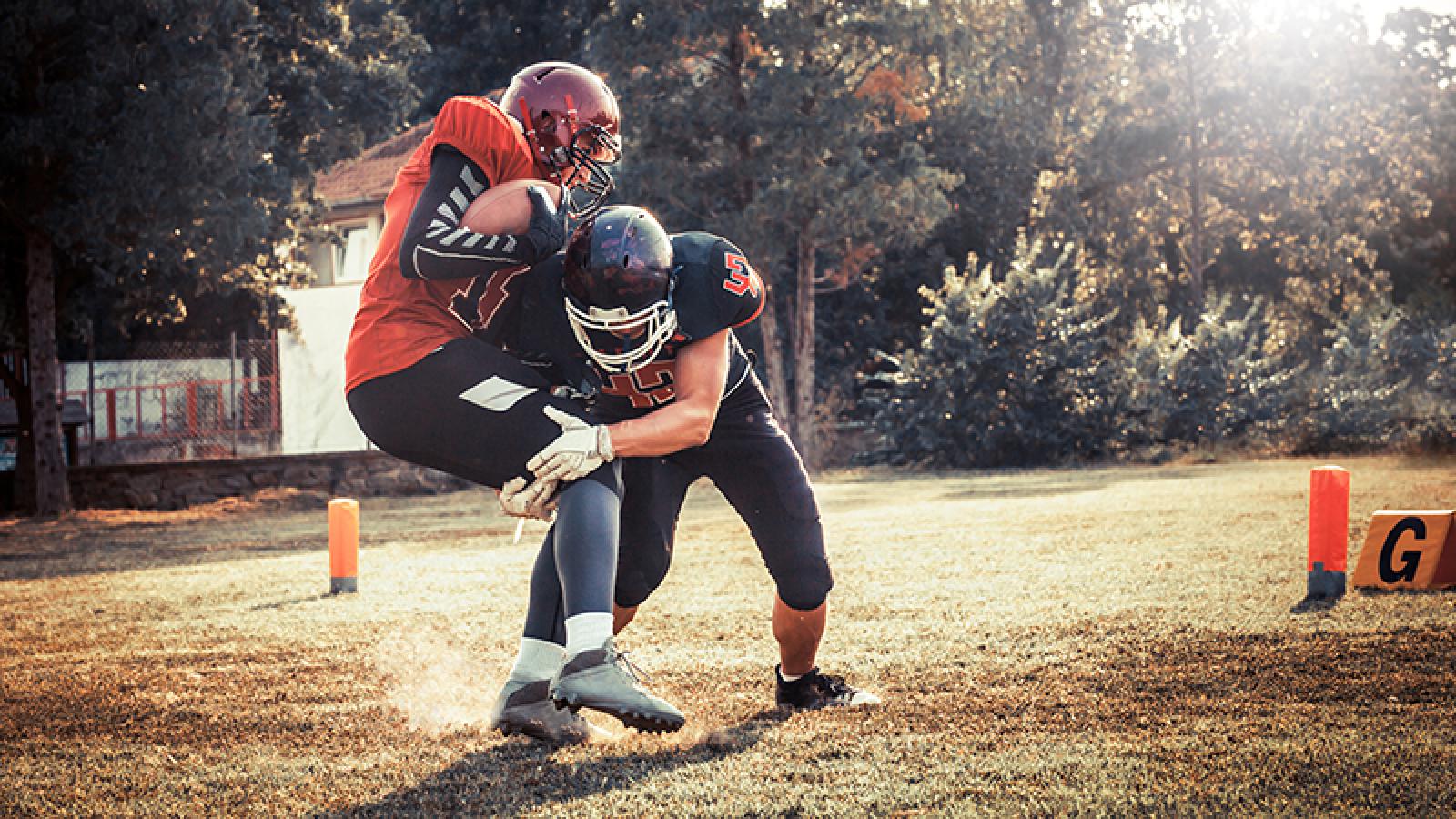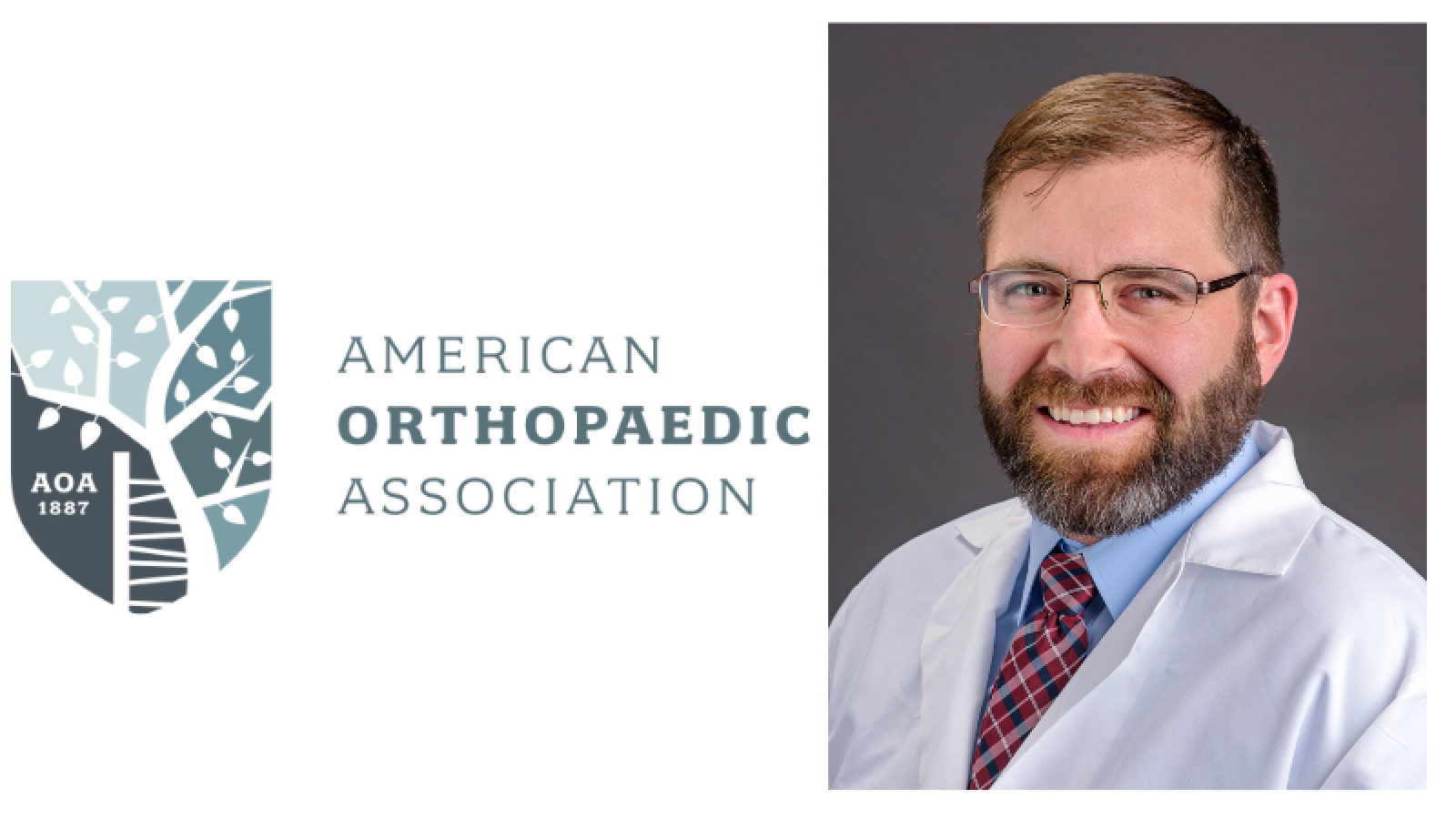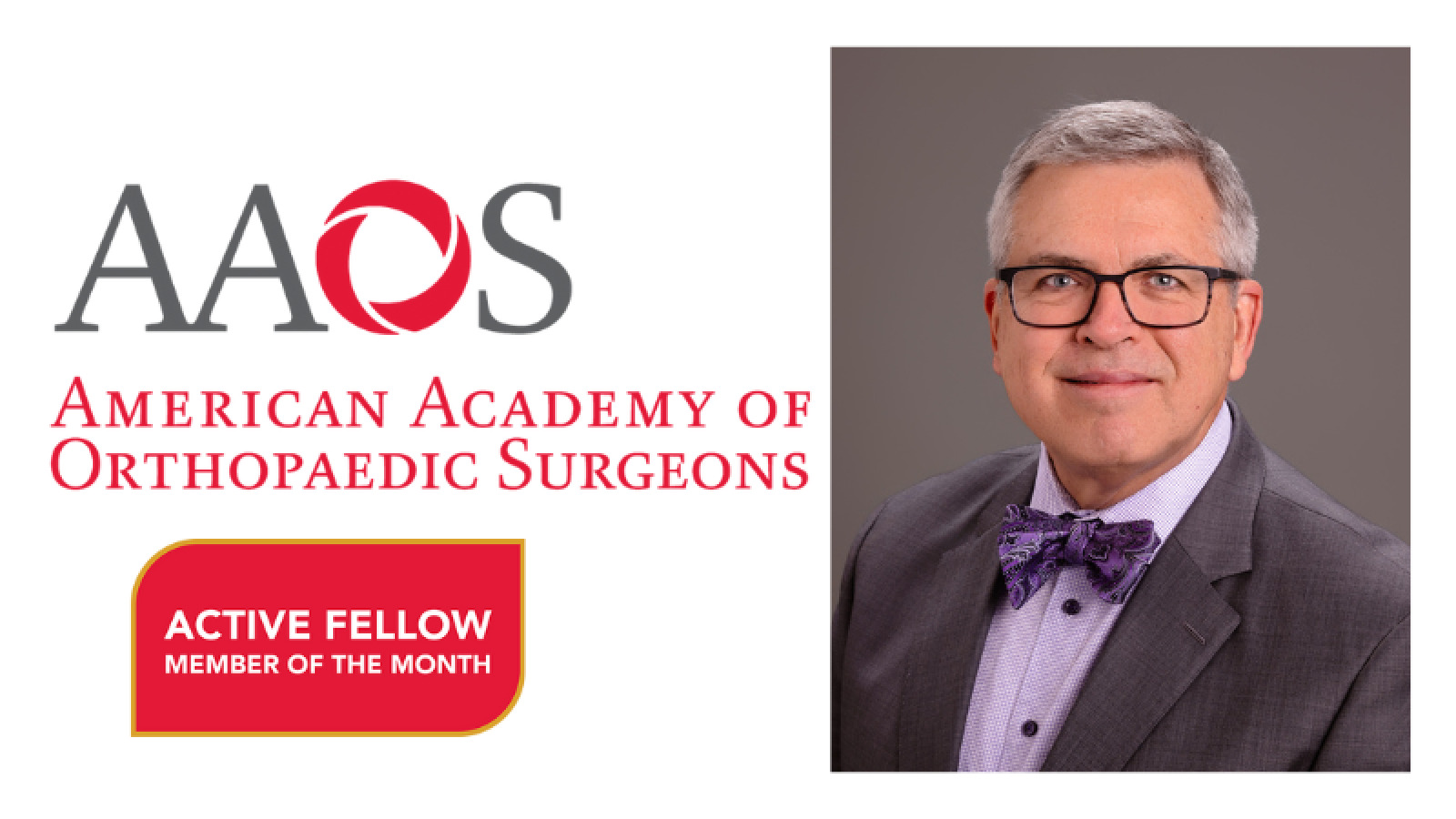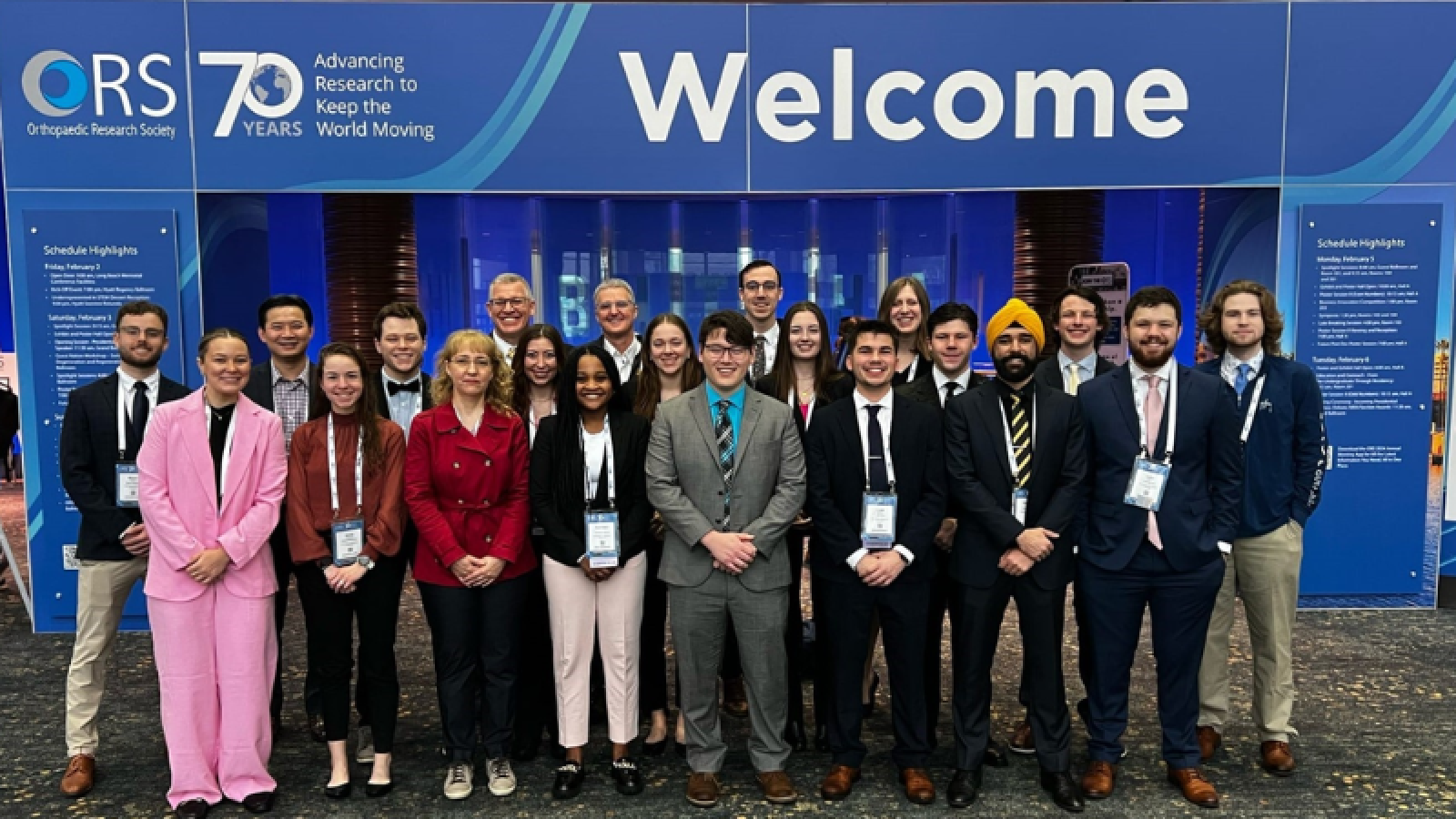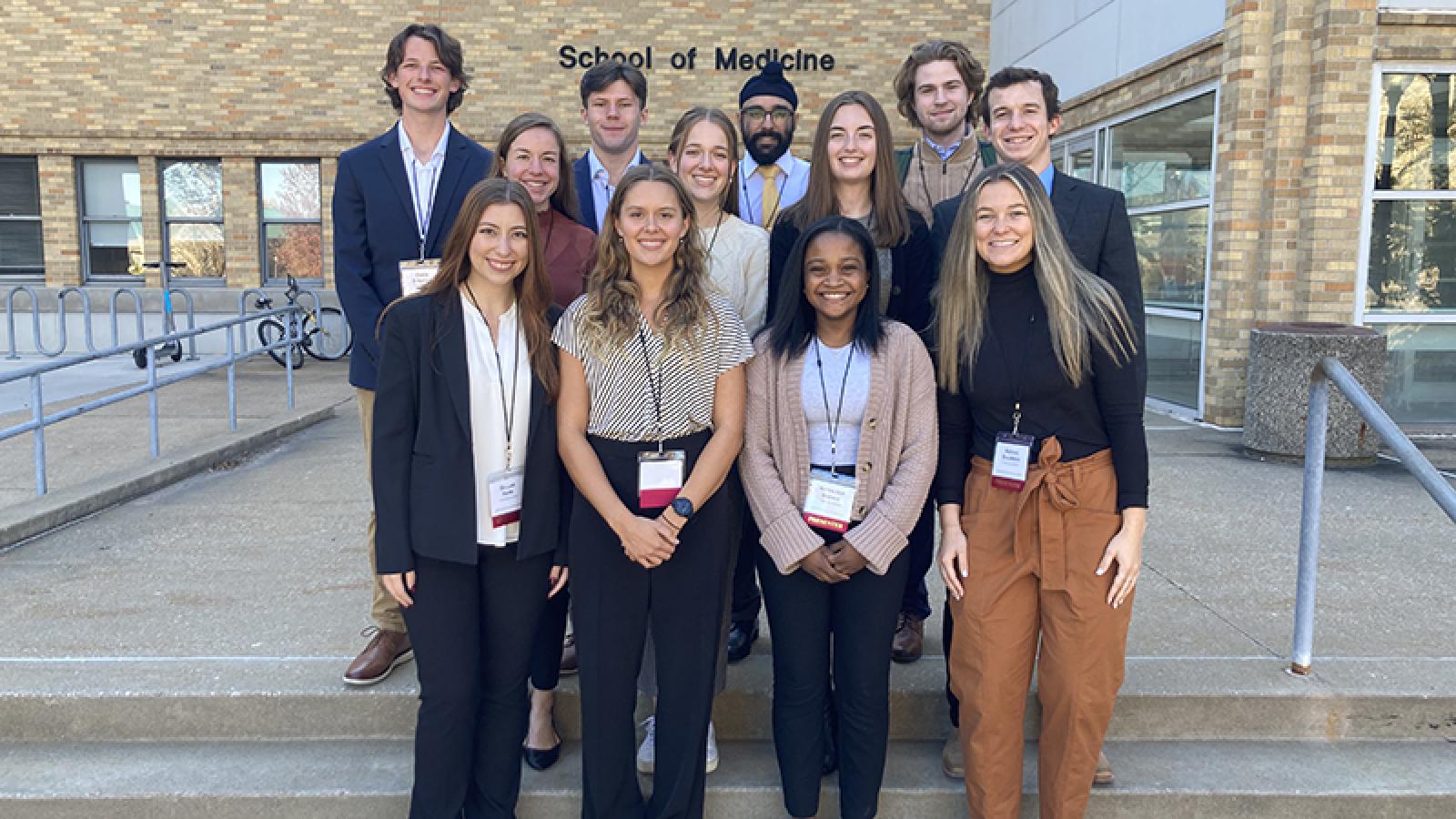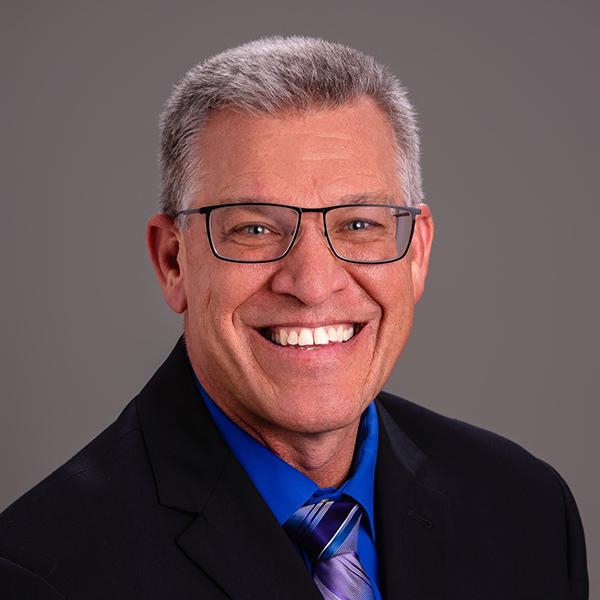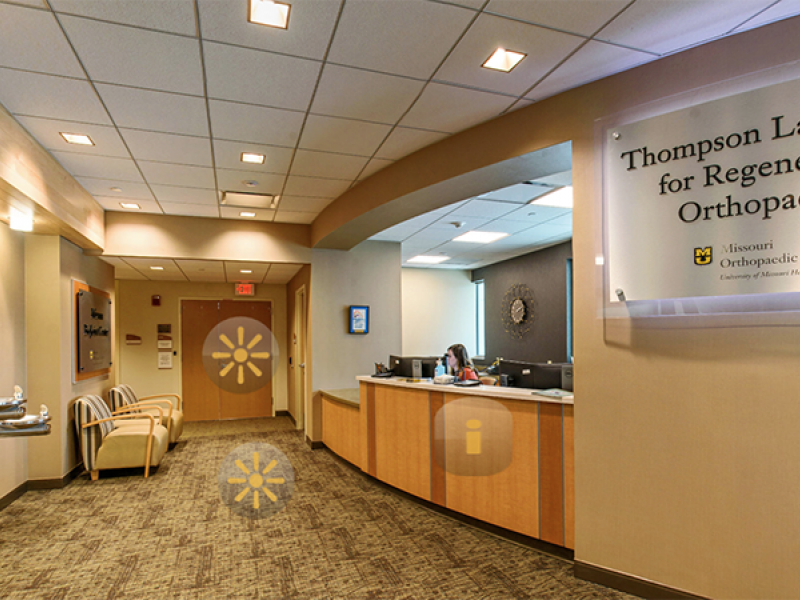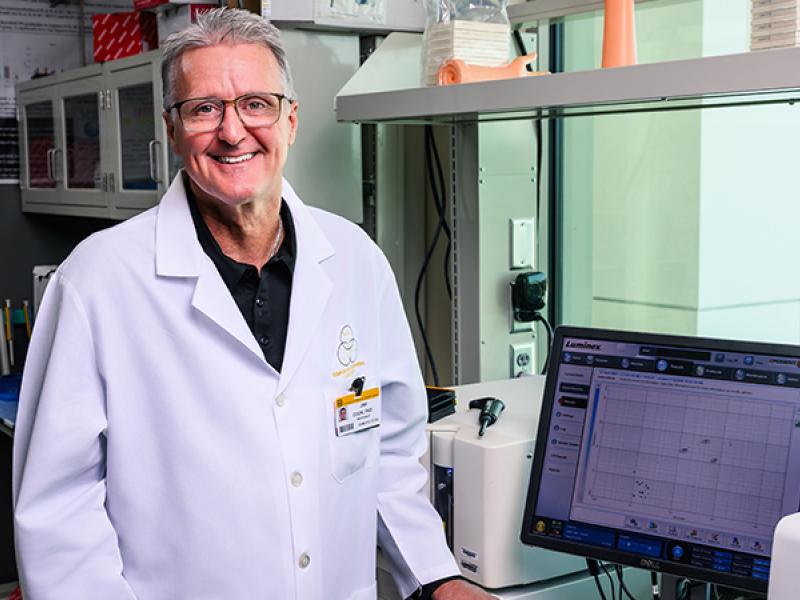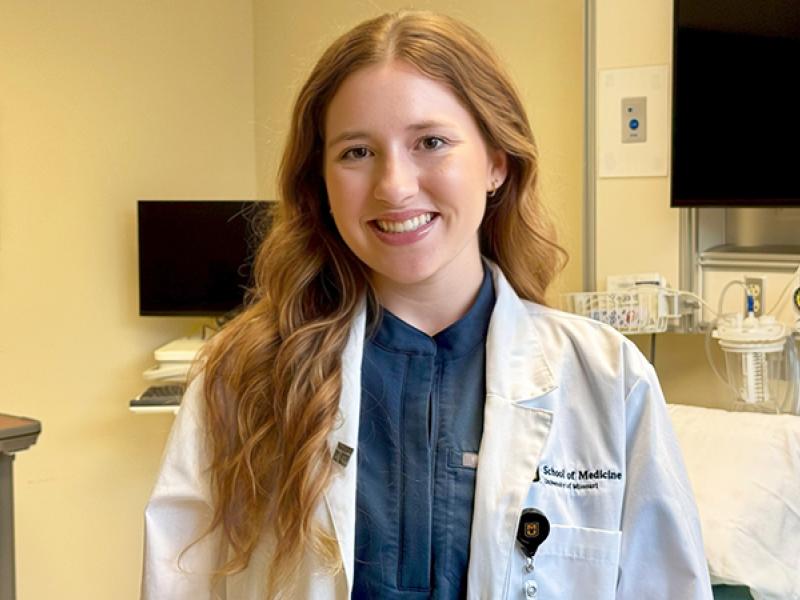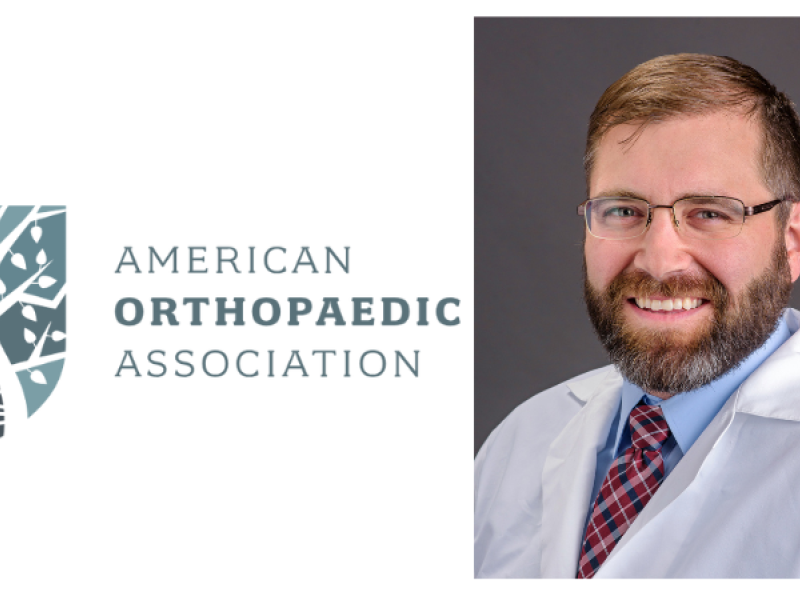The Thompson Laboratory for Regenerative Orthopaedics is a center of discovery through translational and transformative research performed in the heart of the Missouri Orthopaedic Institute.
From humble beginnings, a group of dedicated and passionate scientists, veterinarians, physicians, and engineers built a multidisciplinary team of researchers who formed The University of Missouri’s Comparative Orthopaedic Laboratory in 1999 to find solutions to common orthopaedic problems using the One Health-One Medicine approach. After 15 successful years, The Comparative Orthopaedic Laboratory was endowed with a $3 million gift from the Thompson Foundation, created by William and Nancy Thompson. With the generous donation and strong support from the Thompsons, the Thompson Laboratory for Regenerative Orthopaedics was born, fulfilling the team’s ultimate dream of having comprehensive, state-of-the-art laboratory facilities housed in the same center where health care professionals treat patients. The Thompson Lab was built as a nearly 12,000-square-foot facility where clinicians work alongside researchers in an innovative and collaborative setting to develop and validate the newest and best ways to provide the optimal orthopaedic care to patients – this is what we call “Discovering Better.”
Our Vision
Perform the best clinically applicable orthopaedic research in the world to improve health care for patients.
Our Mission
Quality
Design and conduct the highest quality, hypothesis-driven research focused on orthopaedic disorders.
Application
Implement a comparative and translational approach to investigations of real-life orthopaedic problems to efficiently and comprehensively apply basic science research to clinical situations and optimize the utility of scientific discoveries.
Integrity
Employ a patient-first approach to ensure safety and efficacy in all research. Our mission is best accomplished through a multidisciplinary, multispecies approach by a team of scientists and clinicians dedicated to our center’s goals. We share and disseminate information among investigators allowing expedient progress toward our ultimate goal of treating, curing and eliminating the common and debilitating orthopaedic diseases that affect millions of patients worldwide.


